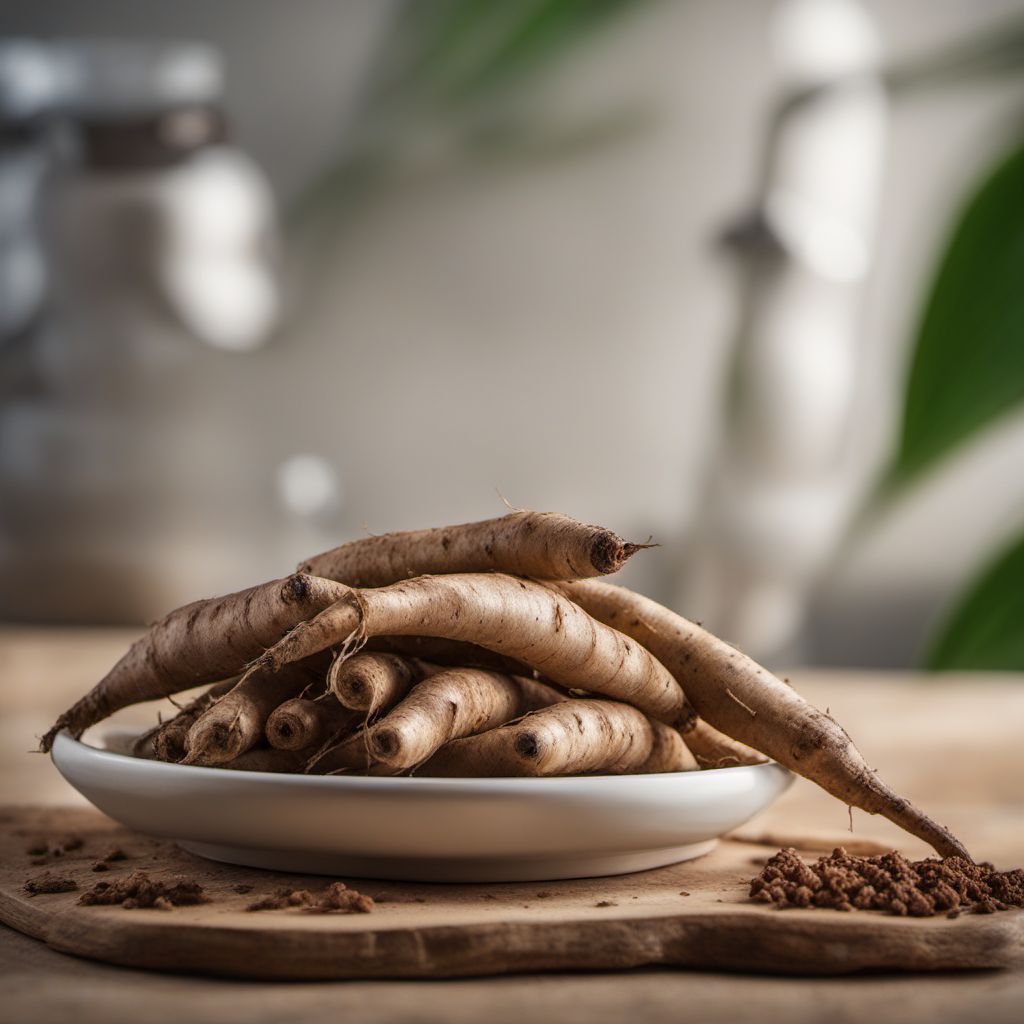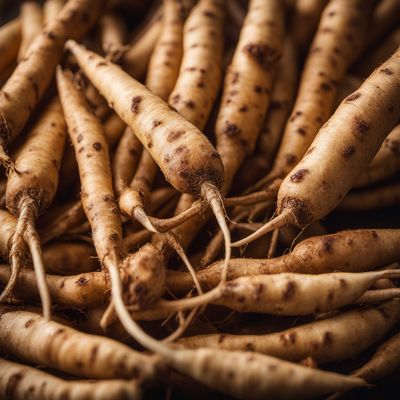
Ingredient
Cassava roots and similar-
The Versatile Tuber: Unleashing the Potential of Cassava
Cassava roots and similar tubers, such as yuca and manioc, are starchy vegetables that have a rough, brown outer skin and a white or yellowish flesh. They are known for their high carbohydrate content and are a good source of dietary fiber. The texture of cassava roots can vary depending on the variety, ranging from firm and crunchy to soft and mealy. When cooked, cassava roots have a mild, slightly sweet taste that pairs well with a variety of flavors. They can be boiled, steamed, fried, or mashed, making them a versatile ingredient in both savory and sweet dishes.
Origins and history
Cassava is native to South America and has been cultivated for thousands of years. It played a significant role in the diet of indigenous peoples in the region and was later introduced to Africa and Asia through trade and colonization. Today, cassava is a staple food in many countries, particularly in tropical regions, due to its ability to thrive in poor soil conditions and its resistance to drought.
Nutritional information
Cassava roots are a good source of carbohydrates and dietary fiber. They also contain essential minerals such as calcium, phosphorus, and potassium. However, it is important to note that cassava roots should be properly processed and cooked to remove cyanide compounds, which can be toxic if consumed in large quantities.
Allergens
Cassava roots are not known to be allergenic.
How to select
When selecting cassava roots, look for firm, unblemished tubers with a smooth skin. Avoid roots that have soft spots or signs of mold. The size of the tuber does not necessarily indicate quality, but smaller roots tend to be more tender and have a sweeter flavor.
Storage recommendations
Cassava roots should be stored in a cool, dry place away from direct sunlight. They can be kept at room temperature for up to a week, but for longer storage, they should be placed in a perforated plastic bag and stored in the refrigerator. Cooked cassava can be stored in an airtight container in the refrigerator for up to 3 days.
How to produce
Cassava can be grown in tropical and subtropical regions. It is typically propagated through stem cuttings, which are planted in well-drained soil. The plants require regular watering and take about 8-12 months to mature. Harvesting involves digging up the tubers from the ground.
Preparation tips
Before cooking cassava roots, they should be peeled and washed thoroughly to remove any dirt or residue. To remove the toxic compounds, cassava roots should be boiled or soaked in water for at least 20 minutes before further cooking. Once cooked, cassava can be used in a variety of dishes, such as cassava fries, cassava cakes, or added to stews and soups for added texture and flavor.
Culinary uses
Cassava roots are commonly used to make cassava flour, which is a gluten-free alternative to wheat flour. It is also used to make tapioca pearls, a popular ingredient in desserts and bubble tea. In many cuisines, cassava roots are used to make traditional dishes such as cassava cake, fufu, or yuca fries.
Availability
Cassava roots are commonly available in tropical regions such as South America, Africa, and Southeast Asia. They can also be found in specialty grocery stores or ethnic markets in other parts of the world.
More ingredients from this category

Canna
"The Versatile Wonder: Unveiling the Culinary Potential of Canna"

Tannias
Versatile Tropical Tubers

Konjac roots
The Versatile Wonder: Unveiling the Potential of Konjac Roots

Cassava roots
The Versatile Tuber: Cassava Roots

Chayote roots
The Versatile Vegetable: Chayote Roots

Taros
The Versatile Taro Root

Blue taros
The Vibrant Purple Powerhouse
Recipes using Cassava roots and similar-

Bangers and Mash with a Brazilian Twist
Sausages and Purée with a Brazilian Flair

Fijian Coconut Chicken Mumu
Tropical Delight: Fijian Coconut Chicken Mumu

Peruvian-style Huevos Rancheros
Andean Sunrise Huevos Rancheros

Puerto Rican Style Fish and Chips
Caribbean Delight: Puerto Rican Fish and Chips

Turkmen Cassava and Spareribs Soup
Hearty Turkmen Delight: Cassava and Spareribs Soup